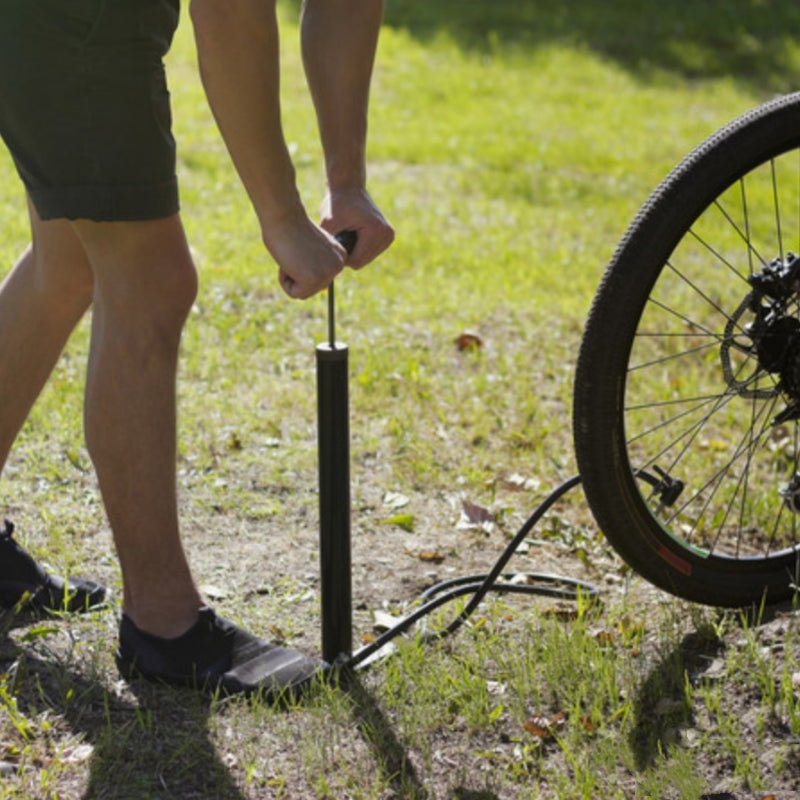A reliable pump is a must-have for any cyclist. Flat tires are inevitable, and it is important to be able to repair them and continue on with the ride. Even if you use CO2 to reinflate your tire, it’s a good idea to have a pump, just in case the CO2 fails (which it sometimes does). When we’re choosing a pump, there are a few specs and features that we look for to get the best results.
WHAT TO LOOK FOR IN A PUMP:
CORRECT VOLUME
This one’s important, pumps are designed with different-sized chambers to accommodate the wide range of bike tires. High-pressure pumps with smaller chambers are perfect for road bikes where you probably want to inflate your tires to 80 PSI or higher. Conversely, high-volume pumps are great for mountain bikes and other larger tires. There are also a few dual-function pumps on the market, designed to switch between high-pressure and high-volume.
Gravel tires fall somewhere in the middle and can generally be inflated using a high-volume pump so long as the pressure is under 40-50 PSI.
WHAT NOT TO DO
You can still inflate mountain bike tires with a high-pressure pump, it will just be inefficient and will take a long time and a lot of energy. Inflating road tires with a high-volume pump on the other hand will be next to impossible at high pressures unless you have hulk-level arm strength.
FLEXIBLE HOSE
While it’s not standard on all pumps, a flexible hose is the single best pump feature available. Why? First off, it makes it much easier to ergonomically pump – you don’t have to hold the pump head steady, which enables the use of both arms in the pumping motion. Secondly, you don’t have to worry about bending Presta valves. On pumps without a hose, it is really easy to bend or even break the delicate tip of a Presta valve – and if that happens, you’ll be stranded on the side of the road.
VALVE COMPATIBILITY
Most pumps are compatible with both Presta and Schrader valves, but a select few are only designed for Presta. So, if you plan on using the pump for a variety of situations, it may be worth ensuring that you purchase one that can handle both.
MOUNTING OPTIONS
Most pumps include a plastic mounting bracket. These usually bolt onto water bottle cage bosses or can sometimes be attached directly to the frame using zip ties. Alternatively, many cyclists choose to carry their pump in a jersey pocket or in a gear bag. Shorter pumps tend to be better for carrying in pockets or bags, but they may be slightly less efficient at inflating.
Classic-style Frame pumps are also a great option for metal frames with straight tubing (unfortunately they won’t fit on most carbon frames).
BONUS FEATURES
Most cyclists are okay with guessing at their tire pressure after fixing a flat, but if you prefer to know if you got the PSI right, there are pumps that come equipped with a gauge. Other mini pumps combine two tools into one with an integrated CO2 tool. For bikepacking and touring, a portable floor pump provides an option between a mini pump and a full-on floor pump. And for the weight-weenies among us, there are ultralight carbon fiber pumps.
OUR GEAR PICKS:





Share:
Respect the Trail: 7 Practices for Riding Responsibly on Bike Trails
Why do I recommend you buy an e-bike?